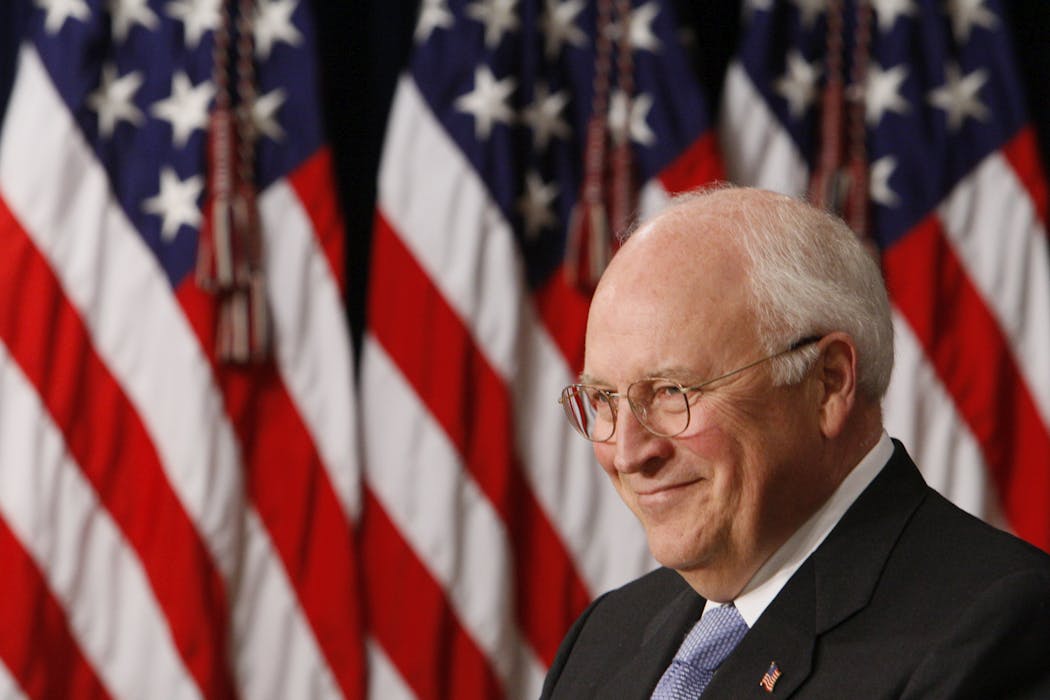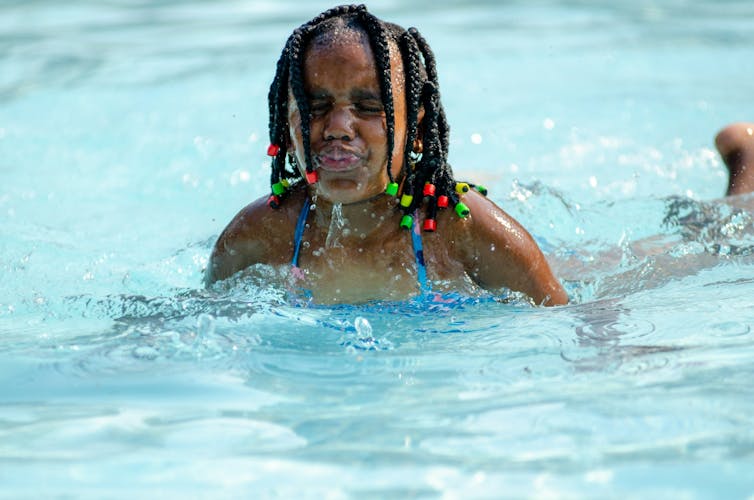Source: The Conversation – (in Spanish) – By Myriam Lamrani, Associate Researcher, Department of Anthropology, Harvard University
Cuando en 2001 apareció por primera vez un esqueleto de tamaño real vestido como la Parca en un altar callejero de Tepito, en Ciudad de México, muchos transeúntes se santiguaron instintivamente. La figura era La Santa Muerte, una santa popular envuelta en misterio y controversia que anteriormente se conocía, en todo caso, como una figura de devoción doméstica: alguien a quien se le podían dirigir oraciones, pero en la intimidad del hogar.
Ella personifica la muerte misma y a menudo se la representa sosteniendo una guadaña o un globo terráqueo. Y desde principios de la década de 2000, su popularidad se ha extendido constantemente por México y América, Europa y más allá.
La idea y la imagen de la muerte convertida en santa es a la vez inconcebible y magnética. Su asociación con los narcotraficantes y rituales criminales hace que mucha gente desconfíe de la figura esquelética. La Santa Muerte también se enfrenta a una importante oposición de la Iglesia católica, que condena su veneración como herética y moralmente peligrosa. Altas figuras de la Iglesia como el cardenal Norberto Rivera Carrera en México han denunciado públicamente su devoción, advirtiendo que promueve la superstición y va en contra de los valores cristianos.
Consuelo más allá de las instituciones
Esta crítica pone de relieve una profunda tensión entre la religión oficial y la devoción popular. Muchos mexicanos que se sienten abandonados por las instituciones gubernamentales y eclesiásticas la acogen como fuente de esperanza. De hecho, según mi investigación, La Santa Muerte representa fuerza, protección y consuelo para sus devotos, entre los que se encuentran presos, policías, trabajadores sexuales, personas LGBTQ+, migrantes, la clase trabajadora y otros grupos menos vulnerables. A pesar de su aspecto temible, ofrece un tipo de cuidado que a menudo se les niega en otros lugares.
Como antropóloga que ha estudiado a La Santa Muerte en México, creo que su poder refleja una paradójica concepción mexicana de la muerte, no solo como símbolo de miedo, sino como parte íntima de la vida cotidiana que se ha convertido en un símbolo de resiliencia y resistencia en medio de la violencia crónica del país.
La muerte y el Estado
En mi reciente libro, La intimidad de las imágenes, examino cómo la devoción por La Santa Muerte en Oaxaca, el estado famoso por su tradición del Día de Muertos, se basa en la relación tradicional y a menudo lúdica de México con la imagen de la muerte.
Basándome en más de una década de trabajo de campo etnográfico, descubrí cómo las oraciones, ofrendas y promesas que le hacen las personas forman parte de un deseo de encontrar soluciones a problemas cotidianos como la enfermedad, las dificultades económicas y la protección contra el daño. Su frecuente representación en imágenes como altares, tatuajes y producciones artísticas también refleja una evolución en la comprensión social de la muerte, que durante mucho tiempo ha sido un símbolo omnipresente de la cultura, la identidad y el poder del Estado mexicano.
Tras la Revolución mexicana a principios del siglo XX, la muerte como símbolo de la nueva nación fue popularizada por artistas como José Guadalupe Posada, especialmente a través de La Catrina, la caricatura del esqueleto dandi, que a menudo se asocia con el Día de Muertos. Mientras que la muerte y su personificación formaban parte en el pasado de una ética de celebración y valentía frente al inevitable final de la existencia, ahora se han convertido en inquietantes recordatorios de la creciente inseguridad y violencia en México.
Esta transformación, y el papel que desempeña el santo esquelético al proporcionar protección en este contexto peligroso, refleja el descenso generalizado de México hacia la agitación. En las elecciones nacionales de 2000, el Partido Revolucionario Institucional (PRI) fue derrocado tras 71 años de gobierno ininterrumpido. La elección del conservador Partido Acción Nacional (PAN) en su lugar supuso la fractura de las alianzas informales entre el Estado y las redes criminales que anteriormente habían reprimido la delincuencia mediante sistemas de clientelismo.
En 2006, el recién elegido presidente del PAN, Felipe Calderón, lanzó una guerra militarizada contra la delincuencia, tras años de evolución de estas primeras redes criminales hasta convertirse en organizaciones despiadadas.
En las décadas siguientes, la violencia de los cárteles se ha disparado, las muertes de civiles y los feminicidios se han intensificado y las instituciones estatales han sido acusadas de complicidad directa o de negarse a intervenir. La desaparición en 2014 de 43 estudiantes en Iguala, un caso que reveló el grado de colusión entre el Estado y las organizaciones criminales y que sigue sin resolverse, no hizo más que cristalizar la indignación pública. Esta violencia desenfrenada continúa hasta el día de hoy.
Desde el inicio de la guerra contra las drogas en México en 2006, se estima que 460 000 personas han sido asesinadas y más de 128 000 figuran oficialmente como desaparecidas en el país, lo que supone aproximadamente una de cada 1 140 personas. En estados muy afectados, como Guerrero y Jalisco, es probable que esa proporción sea mucho mayor, lo que pone de manifiesto la desigualdad geográfica de la violencia y las desapariciones en todo el país.
Claudia Sheinbaum, la primera mujer presidenta de México, que asumió el cargo en octubre de 2024, ha prometido desmantelar el crimen organizado. Sin embargo, la violencia y la percepción generalizada de inseguridad entre la población persisten.
Un espejo violento
Para la mayoría de los devotos, La Santa Muerte no es una aliada de los criminales, a pesar de que la utilicen los grupos vinculados a los cárteles. En cambio, es una de las pocas formas de ayuda que quedan en medio de una realidad social aterradora. No ofrece ninguna ilusión de que la situación de disfunción política o violencia desenfrenada vaya a mejorar, solo presencia y protección. Su imagen refleja una verdad brutal: la supervivencia ya no está garantizada por un Estado cuyos vínculos con los cárteles son profundos.
Este vacío político y espiritual se refleja en el auge de otras figuras laicas de devoción, caso de santos populares como Jesús Malverde, otros más oficiales como San Judas Tadeo, o incluso la devoción al diablo.
Sin embargo, La Santa Muerte es diferente. Ella es la muerte personificada, el fin de la vida, la jueza definitiva y un símbolo de la mortalidad compartida, independientemente del estatus, la raza o el género. Como me dijo un devoto: “Si nos abres, encontrarás los mismos huesos”. La Santa Muerte también está imbuida del cuidado y el amor de sus seguidores. Algunos se dirigen a ella como a un familiar, una tía o una madre venerada que encarna la protección maternal y un tipo de fuerza más comúnmente asociada con lo masculino. Como muchos dicen: “Es una cabrona”.
Patrona de un país donde la muerte acecha
En un país donde la protección del Estado es escasa y los límites entre las autoridades y los cárteles, difusos, La Santa Muerte representa al pueblo y también protege a sus creyentes a través de una protección milagrosa. Sus seguidores acuden a ella porque, como dicen, solo la muerte puede protegerlos de la muerte.
Dada la vulnerabilidad de sus devotos y la confianza incondicional que depositan en su santa esquelética, es más que un simple folclore. Es la santa patrona de muchos en un país donde la muerte acecha. Es una figura de consuelo personal y resiliencia colectiva. Y, por encima de todo, es un espejo que refleja una sociedad en crisis y sumida en la violencia, y un pueblo que busca sentido, dignidad y protección frente a todo ello.
![]()
Myriam Lamrani no recibe salario, ni ejerce labores de consultoría, ni posee acciones, ni recibe financiación de ninguna compañía u organización que pueda obtener beneficio de este artículo, y ha declarado carecer de vínculos relevantes más allá del cargo académico citado.
– ref. “Solo la muerte puede protegernos”: cómo el culto a La Santa Muerte refleja la violencia en México – https://theconversation.com/solo-la-muerte-puede-protegernos-como-el-culto-a-la-santa-muerte-refleja-la-violencia-en-mexico-268955










